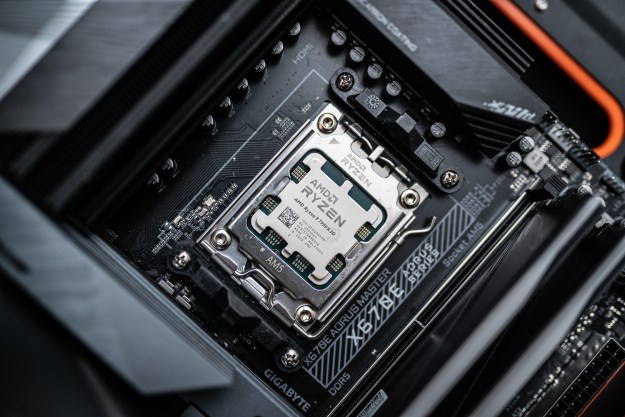In a field where its technology has already changed the game for a lot of industries, Vayyar Imaging is doubling down on its innovations in 3D sensors. On Wednesday, May 2, the company announced that its next generation of advanced radio frequency sensors is about to hit the market, complete with smarter and more powerful capabilities for a wide variety of applications including construction, elder care, retail, and smart home technology.
The trick to the new sensors is integrating more antennas onto a single chip, making them more advanced but also lighter and smaller; the new chip is the size of a matchbox. The new chips contain 72 transmitters and 72 receivers in a single chip that covers imaging and radar bands from 3GHz to 81GHz. Essentially, Vayyar has created a wildly powerful platform for mmWave 3D imaging — and, importantly, one that doesn’t require an external CPU to execute complex imaging algorithms.

In practice, Vayyar’s technology turns the world invisible, an application the company sometimes calls “Superman vision.” The new sensors can differentiate between objects and people, determine location even when mapping very large areas, and create a 3D image of the environment in real time.
The practical applications of the technology are wildly diverse. In an elder care setting, Vayyar sensors could monitor residents’ location, movement, height, posture, and vital signs with no wearables or cameras. The sensors might also monitor the composition of materials, allowing sensitive users to monitor the fat, protein, alcohol content, and other percentages in food and drinks. In smart homes, Vayyar can enable the monitoring of people’s location, the presence of intruders, and the presence of people in emergency situations.
The technology also has practical applications for other industries. Automotive manufacturers are looking to Vayyar sensors to augment not only interior movements in a car’s interior, but also identifying trajectory and classifying objects in the surrounding area for collision avoidance, autonomous driving, and parking assistance.

The technology could also provide huge opportunities to the retail and industrial sectors. Retail operations are already using managed video surveillance and smart algorithms to track, analyze, and influence consumer behaviors. Vayyar can gather the same insights and generate retail strategies without altering store aesthetics or invading the privacy of shoppers. Similarly, offices and factories can identify a human presence, count people, and provide real-time, location-based data for automation and energy efficiency purposes.
“Radio wave imaging is a powerful technology, which was dormant for decades,” Raviv Melamed, co-founder, CEO and Chairman of Vayyar, said in a statement. “Vayyar’s new sensor is finally unleashing its potential. Together with the chip, we provide our customers with a full suite of software and advanced algorithms to expedite their ability to develop products based on our technology. This has created a synergy that is propelling an accelerated path to market for a wide range of products that can help people to better care for their elders, detect cancer at an early stage, make our homes more secure without compromising privacy and improve car safety in every weather condition.”
Editors' Recommendations
- 4 CPUs you should buy instead of the Ryzen 7 7800X3D
- Nvidia turns simple text prompts into game-ready 3D models
- Glasses-free 3D gaming can be amazing — but only if it’s done right
- AMD’s upcoming Ryzen 5 5600X3D could completely dethrone Intel in budget builds
- 3D printed cheesecake? Inside the culinary quest to make a Star Trek food replicator


